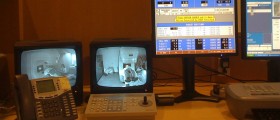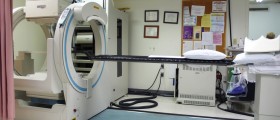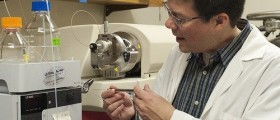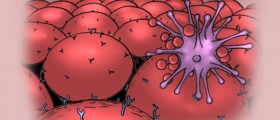
Radiation therapy is a treatment modality in which high-energy radiation is used to kill cancer cells. High-energy rays can easily destroy DNA in cancer cells and cause their death. This way the cancer shrinks or the area that has previously been surgically treated is sterilized (all the remnant cancer cells are destroyed).
Radiation Therapy for Lung Cancer
Radiation therapy is only one treatment option for lung cancer. Patients can also undergo surgery or receive chemotherapy. What needs to be mentioned is that both lung cancers, small-cell and non-small-cell carcinomas can be treated with radiation therapy. The effects, however, differ since some types of lung cancers are more susceptible to radiation while others show more resistance.
Radiation therapy for lung cancer can be administered before surgery or after surgery. Neoadjuvant radiation therapy is used to shrink the tumor and make the following surgical procedure easier while the goal of adjuvant radiation therapy is done to destroy all the cancer cells that may not have been removed during surgery. Furthermore, radiation therapy treats patients with small tumors who cannot undergo surgery because of comorbidities, age or location of the tumor. It is also used in case of metastatic lung cancer (radiotherapy of the brain in case of brain metastases). Some patients suffering from lung cancer are treated with palliative radiation therapy, treatment that does not cure the primary illness but reduces symptoms of the advanced disease (bone metastases, superior vena cava syndrome etc.). And finally, radiation therapy is also used prophylactically in patients suffering from small-cell lung cancer. Namely, they undergo prophylactically radiation therapy of the brain since this type of tumor is highly likely to give metastases to the brain even in early stages of the disease.
Types of Radiation Therapy for Lung Cancer
Lung cancers can be treated with external bean radiation therapy or internal radiation therapy also known as brachytherapy.
There are several types of external bean radiation therapy. They include conventional (two-dimensional) radiation therapy, 3D conformal radiation therapy and intensity modulated radiation therapy (IMRT). They include administration of high-energy radiation form the sources located outside the body. Brachytherapy for lung cancer, on the other hand, includes placing a plastic tube into the airway (duringbronchoscopy). The tube is then filled with radioactive material. After the treatment tube together with radioactive material is removed from the airway. The dose used during the treatment is measured in Gy (grays) by radiation oncologists.
Side Effects of Radiation Therapy for Lung Cancer
Some of the most common side effects of radiation therapy for lung cancer include fatigue, skin irritation (rarely), pain and difficulty swallowing (irritation of the esophagus). Long-term side effects include pulmonary fibrosis and damage to the heat muscle.

















Your thoughts on this
Loading...